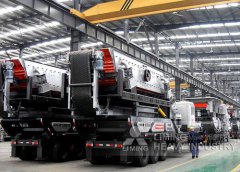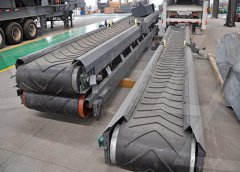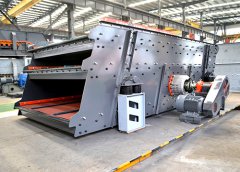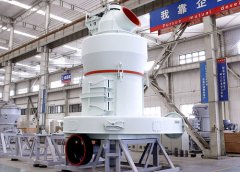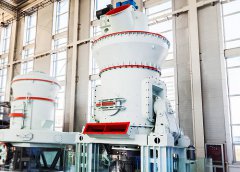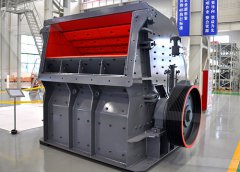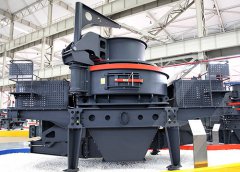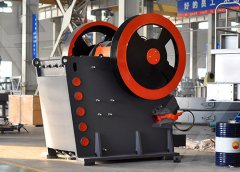
The Cement Plant Operations Handbook International
The Cement Plant Operations Handbook is a concise, practical guide to cement manufacturing and is the standard reference used by plant operations personnel worldwide.Low (2005) performed the first comprehensive material flow analysis for concrete, and calculated the amounts of raw material, water, and energy required as Analysis of material flow and consumption in cement production process
احصل على السعر
Cement plant performance optimization Benchmarking,
Collection of operational data. Analysis of process performance and site constraints. Plant modeling. Usage of obtained process models and operational data to The energy efficiency of a raw material preparation unit of 84.30% in a cement plant in Turkey was calculated by Utlu et al. in,while Atmaca and Yumrutas in conducted exergoeconomic analysis of a 4-stage dry rotary Parametric Studies of Cement Production
احصل على السعر
Heat Transfer SpringerLink
For a modern cement plant, the thermal energy requirement is 3–4 GJ/ton of clinker [1,2,3]. The calculation shows that about 15% heat is lost in the total This study assessed the energetic efficiency of a precalcining rotary kiln process in a cement industry. •. Energetic efficiency was estimated as 61.30 % using Energetic assessment of a precalcining rotary kiln in a cement plant
احصل على السعر
Calculation of the formation process of clinker
Cement production is a highly energy-intensive process, and the rotary kiln is the most important part of the process. Having a comprehensive model of the kiln in order to reduce manufacturingThe Cement Plant Operations Handbook 6th Edition January 2019 This handbook has been superseded by the Cement Plant Operations Handbook 7th Edition. Fully revised and updated with improved content, the new The Cement Plant Operations Handbook 6th Edition
احصل على السعر
online training and onsite training for cement
Our all online and onsite training programs are designed with six-sigma and lean manufacturing theme for CCR Operators, Process Engineers quality peoples and plant technical management team. Learners can work Since the cement production is an energy intensive process, the energy economics is particularly of interest in this industry. Therefore, this subject has been of much interest in the last few decades. Recently, Engin et al. (2005) studied the energy audit and recovery for a dry type cement rotary kiln system with a capacity of 600 ton-Energy and exergy analyses of a parallel flow, four- stage
احصل على السعر
Energetic assessment of a precalcining rotary kiln in a cement plant
This study assessed the energetic efficiency of a precalcining rotary kiln process in a cement industry. • Energetic efficiency was estimated as 61.30 % using Aspen Plus process simulator and artificial neural network (ANN) model predict with correlation coefficient (R 2) of 0.991.. Optimal energy efficiency of 61.5 % was established for the Guide to calculation worksheet (October 2001) I. OVERVIEW 2 I.A. Purpose and Domain of this Section 2 I.B. Potential Sources of Greenhouse Gas Emissions from the Cement Industry 2 I.C. Process Description and Assumptions 3 II. CO 2 DIRECT PROCESS EMISSIONS FROM CEMENT PRODUCTION (CEMENT-BASED Calculating CO2 process emissions from Cement
احصل على السعر
CCUS in Cement Industry : Conceptual Design Report for
cement industry calculations regarding the costs of CCUS and will lead to inaccurate projections of CCUS adoption within the industry. Moreover, we have new information on the locations, emissions, and technologies used for all individual cement production plants in the 48 states due to a database created by DOE-FE.An optimization study has been conducted on calcium carbonate requirements in rotary kilns in Lebda cement plant. Optimization is carried out by a MATLAB computer program. The results showed that(PDF) Deterministic Approach for Calculation of Carbon Footprint
احصل على السعر
Decarbonization options for cement production process: A
The conceptual layout of a modern cement production plant is presented in Fig. 1 [8].The production of cement involves the raw material (meal) preparation followed by the pyro-processing step in which the raw meal is heated up to the sintering temperature (higher than 1400 °C) to produce clinker which then is blended with additives (e.g. Use of CO2 mineralisation in the cement industry could be profitable and cut CO2-equivalent emissions by up to a third, if the process is eligible for carbon trading and its products are used inTowards a business case for CO2 mineralisation in the cement
احصل على السعر
The Cement Plant Operations Handbook 6th Edition
Fully revised and updated with improved content, the new Sixth Edition of the Cement Plant Operations Handbook is now available. Covering some 300 pages, the cement industry’s favourite technical reference book offers in-depth information on the various aspects of cement production. Some 22,000 copies over the past five editions have beenCement clinkerisation is the major energy-consuming process in cement manufacturing due to the high-temperature requirement. In this paper, energy data including specific energy consumption, forms, and types of energy used at different units of cement manufacturing processes were analyzed and compared for effectiveness, availability, Energy and Economic Comparison of Different Fuels in Cement
احصل على السعر
Clinkerization Cement Plant Optimization
The liquid percentage at 1450 0 C can be estimated using the formula. % Liquid content (1450 0C) = 3.0 x A+2.25 x F+S. Where A=Al 2 O, F=Fe 2 O 3, S= MgO+K 2 O+Na 2 O+SO 3 In Clinker. The normal range of liquid The global warming potential of concrete is reduced by 22-30.6% and 44-51.4% when fly ash, regardless of type, is used at 25% and 50%, respectively, in comparison with pure cement concrete.(PDF) Methodology for Calculating Carbon
احصل على السعر
Analysis of material flow and consumption in cement production process
Thus, the first material flow route for cement plants was examined in this study. Additionally, a cement plant was surveyed to quantify the amount of material consumed during the cement processing stages by using the mass calculation method discussed in section 3. In the surveyed cement plant, three balances are established In order to calculate the dust return correction of the kiln feed you have to evaluate a mass balance based on your own calculations beside the Protocol Spreadsheet. In this topic a practical example of this calculation is presented. The example refers to a plant with a production of 1 million tonnes of clinker per year.Example for calculating the dust return correction Cement
احصل على السعر
7 Essential KPIs to Monitor in Cement Manufacturing Plants
The total output is the quantity of cement produced, while the total input is the amount of resources (e.g. labor, energy, materials) used to produce the cement. Example of Calculation. For example, a cement plant produces 100 tons of cement in one day with 10 workers and 10 megawatts of energy.1. Introduction. Cement production is one of the energy-intensive industries, which consumes nearly 5% of the global industrial energy [1, 2].In cement production, energy cost accounts for 30%–40% of the total production cost [3].In particular, China's cement production accounts for 55–60% of the world's cement production Energy and thermodynamic analysis of a typical cement
احصل على السعر
Parametric Studies of Cement Production Processes Hindawi
The calculations were performed under the following assumptions: (i) cyclone efficiency was selected from the range of 95% to 75%, and a corresponding pressure drop in cyclones were in the range of 1.51 mbar to 0.83 mbar, respectively; (ii) PH-stage mixed pressure drops were set to 0.8195 bar, 0.8390 bar, 0.8514 bar, and 0.8170 bar; (iii) isentropic and The Indian cement industry comprises of 210 cement plants; in a total of which 77 are established in Andhra Pradesh and Tamil Nadu (Indian Cement Industry Analysis, IBEF, 2021). An increase in theDeterministic approach for calculation of Carbon
احصل على السعر
Carbon Capture for CO2 Emission Reduction in the Cement Industry in Germany
The share of global CO2 emissions deriving from the cement industry is about 5%. More than 50% of these are process-related and cannot be avoided. This paper addresses the application of CO2 capture technology to the cement industry. Analyses focusing on post-combustion technology for cement plants are carried out on the basis of 1. Introduction. Although the cement industry globally is one of the most important parts of the economic sector, cement production is an extremely CO 2 emission process. Several investigations have been conducted to reduce cement production issues (Chipakwe et al. Citation 2020).They were focused mainly on cement chemistry, and few Modeling operational cement rotary kiln variables with
احصل على السعر
